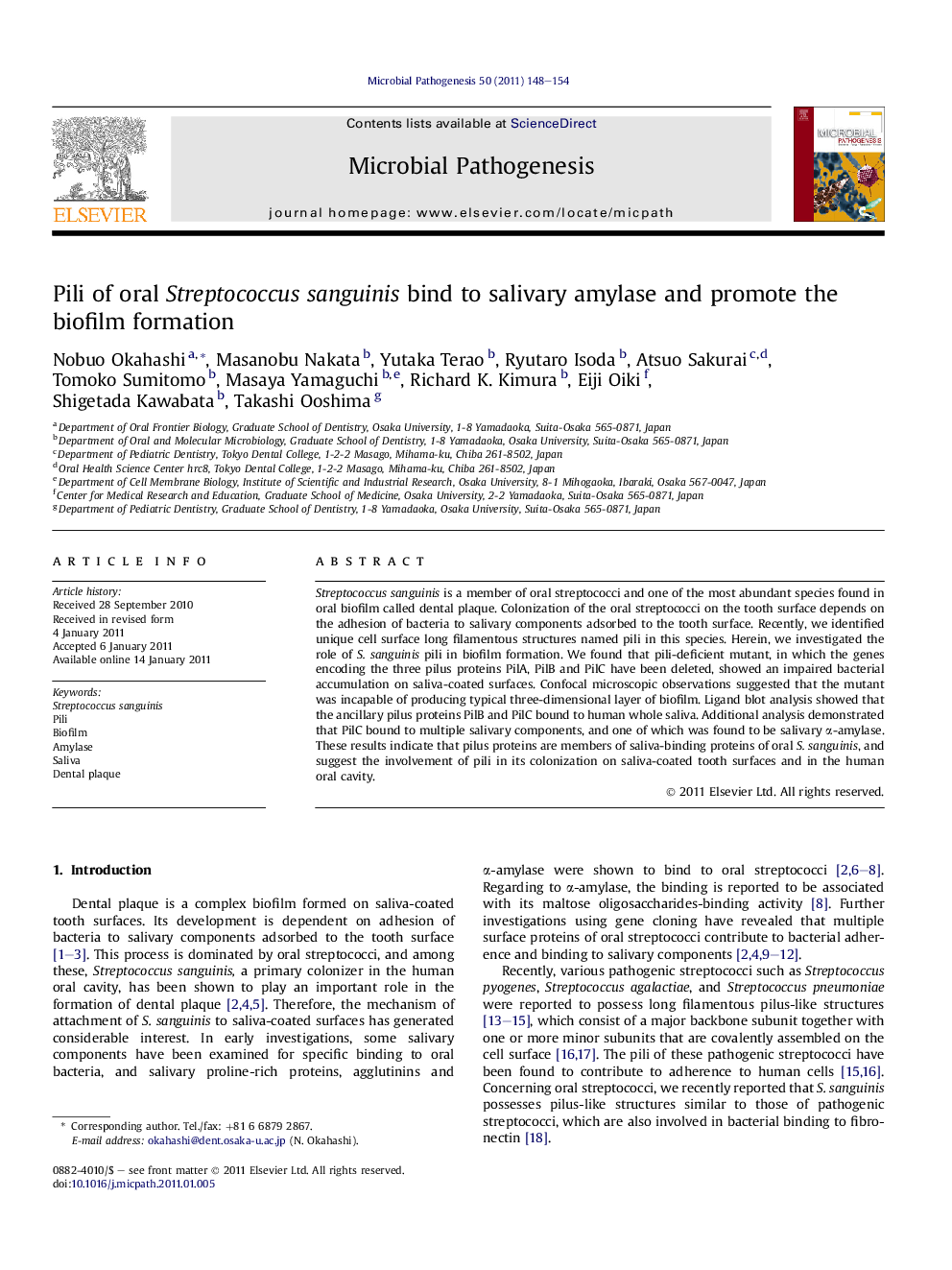| Article ID | Journal | Published Year | Pages | File Type |
|---|---|---|---|---|
| 3416841 | Microbial Pathogenesis | 2011 | 7 Pages |
Streptococcus sanguinis is a member of oral streptococci and one of the most abundant species found in oral biofilm called dental plaque. Colonization of the oral streptococci on the tooth surface depends on the adhesion of bacteria to salivary components adsorbed to the tooth surface. Recently, we identified unique cell surface long filamentous structures named pili in this species. Herein, we investigated the role of S. sanguinis pili in biofilm formation. We found that pili-deficient mutant, in which the genes encoding the three pilus proteins PilA, PilB and PilC have been deleted, showed an impaired bacterial accumulation on saliva-coated surfaces. Confocal microscopic observations suggested that the mutant was incapable of producing typical three-dimensional layer of biofilm. Ligand blot analysis showed that the ancillary pilus proteins PilB and PilC bound to human whole saliva. Additional analysis demonstrated that PilC bound to multiple salivary components, and one of which was found to be salivary α-amylase. These results indicate that pilus proteins are members of saliva-binding proteins of oral S. sanguinis, and suggest the involvement of pili in its colonization on saliva-coated tooth surfaces and in the human oral cavity.
